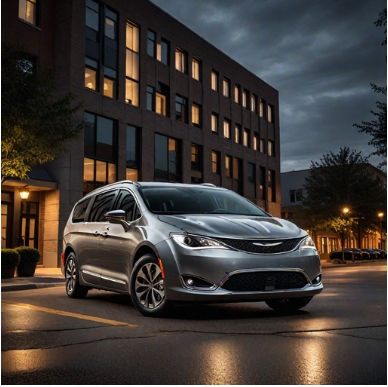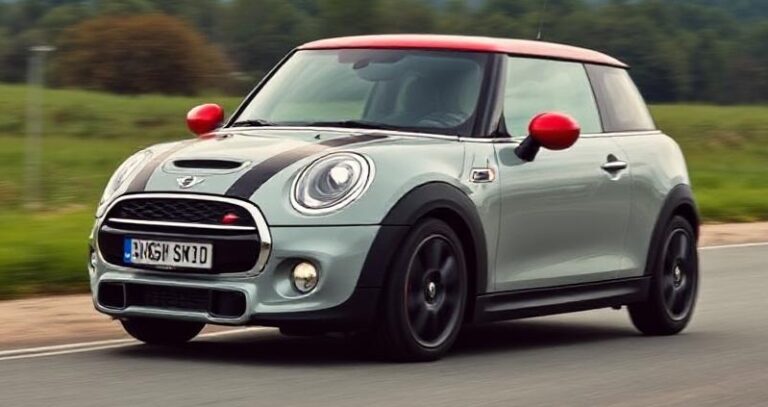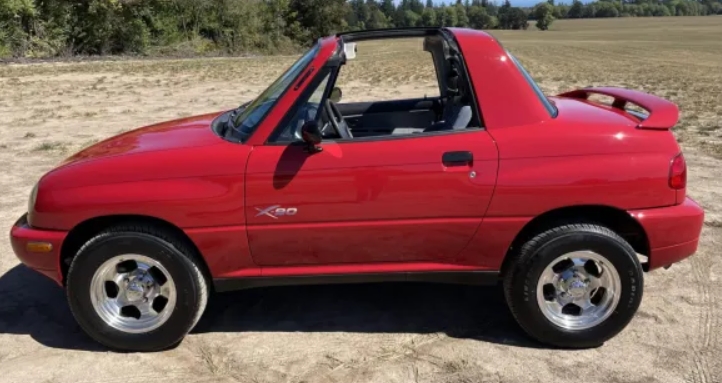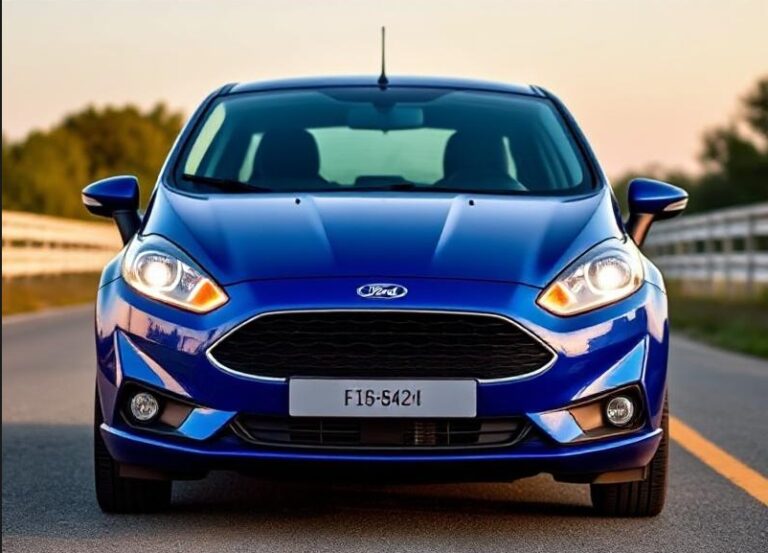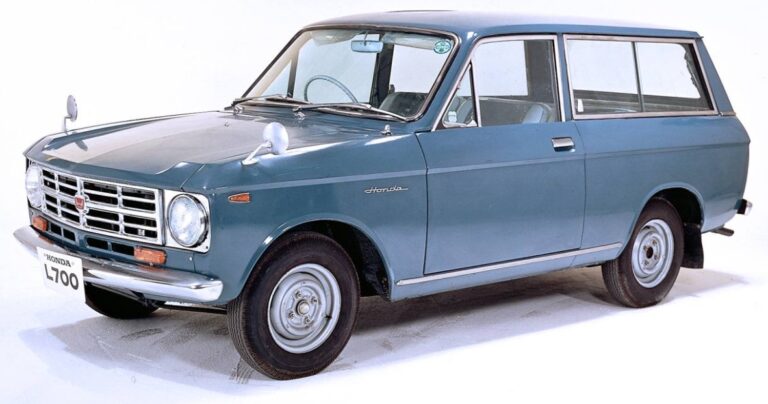The Honda That’s: A Quirky Compact’s Evolutionary Journey
In the vast and diverse landscape of the automotive world, certain models carve out their own unique niches, often defying conventional design and engineering trends. The Honda That’s, a compact Kei car produced exclusively for the Japanese domestic market (JDM), is a prime example of such an individualistic creation. Emerging in the early 2000s, this diminutive vehicle was a testament to Honda’s willingness to experiment with unconventional styling and packaging, aiming to capture the hearts of buyers seeking practicality, fuel efficiency, and a dash of personality. This article delves into the evolution of the Honda That’s, tracing its production years, exploring its various models, and detailing the trim levels that defined its existence.
The Genesis of the That’s: 2002-2006 (First Generation)
The Honda That’s made its debut in February 2002, entering a Kei car market already brimming with established players. Its design was a deliberate departure from the more boxy and pragmatic offerings of competitors.Honda envisioned a car that blended the functionality of a compact with a more stylish, almost whimsical aesthetic. The first generation That’s was characterized by its rounded, bubble-like silhouette, large, expressive headlights, and a surprisingly upright greenhouse that maximized interior space.
Underneath its distinctive exterior, the first-generation That’s was built on Honda’s established platform for its smaller vehicles, sharing components with other Kei cars of the era. It was powered by a range of small-displacement, three-cylinder engines, typical for the Kei car segment, designed to maximize fuel economy and keep taxes low.
Engine and Powertrain:
The primary engine for the first-generation That’s was the E07Z, a naturally aspirated 656cc inline-three cylinder engine. This engine produced around 47 horsepower and was paired with either a 3-speed automatic transmission or a continuously variable transmission (CVT). Later in the generation, a turbocharged version of the E07Z became available, offering a modest power bump to around 63 horsepower, providing a bit more pep for city driving and highway cruising.
Drivetrain Options:
Buyers had the choice between front-wheel drive (FF) and real-time four-wheel drive (4WD), a crucial option for drivers in regions with challenging weather conditions.
Models and Trim Levels of the First Generation:
The first generation of the Honda That’s offered a surprisingly diverse range of trim levels, catering to different needs and budgets. While the core design remained consistent, the variations lay in features, interior appointments, and sometimes subtle exterior embellishments.
- That’s (Base Model): This was the entry-level offering, providing the fundamental That’s experience. It typically featured essential amenities, focusing on affordability and practicality. Standard equipment would have included power steering, basic air conditioning, and a simple audio system.
- That’s F: The “F” trim usually denoted a slight step up in features from the base model. It often included power windows, central locking, and perhaps a slightly upgraded interior fabric or trim. This was a popular choice for those seeking a little more convenience without a significant price increase.
- That’s L: The “L” trim represented a more comfort-oriented package. It might have featured enhanced seat materials, a more sophisticated audio system with more speakers, and possibly some exterior chrome accents. This was for the buyer who appreciated a bit more refinement in their daily commute.
- That’s Turbo: As the name suggests, this trim was distinguished by the presence of the turbocharged E07Z engine. Beyond the performance upgrade, it often came with sportier interior accents, unique badging, and sometimes alloy wheels. This model appealed to those who desired a more engaging driving experience within the Kei car constraints.
- That’s W (W-Package): The “W” often signified a “wide” or “wealth” package, implying a higher level of equipment. This could include premium upholstery, advanced climate control, and potentially more safety features. It was the top-tier offering for those who wanted the most comprehensive feature set.
- Special Editions: Throughout the first generation, Honda also introduced various limited-run special editions, often based on existing trims but with unique color schemes, interior treatments, or added accessories. These were designed to maintain interest and offer distinctiveness to buyers.
.

.
Refinement and Evolution: 2006-2014 (Second Generation)
In August 2006, Honda introduced the second generation of the That’s, a significant update that refined its iconic design and introduced further improvements. While retaining the core philosophy of quirky practicality, the second-generation That’s presented a slightly more mature and contemporary look. The rounded edges were softened, the headlights became more integrated into the overall design, and the proportions felt a little more balanced.
The fundamental engineering remained similar, but Honda continued to prioritize fuel efficiency and low emissions, in line with evolving Japanese regulations. The interior also saw updates, with improved ergonomics, higher-quality materials, and a more modern dashboard layout.
Engine and Powertrain:
The second-generation That’s continued to utilize the E07Z engine, but with further refinements for increased efficiency and slightly improved performance. The naturally aspirated version still produced around 47 horsepower, while the turbocharged variant now offered approximately 63 horsepower.
Drivetrain Options:
The drivetrain options remained consistent: front-wheel drive (FF) and real-time four-wheel drive (4WD).
Models and Trim Levels of the Second Generation:
The second generation also saw a structured approach to its trim levels, building upon the successful formula of the first generation.
- That’s (Base Model): Similar to its predecessor, the base model offered a no-frills approach, focusing on essential transportation. It would have included power steering, air conditioning, and a basic stereo.
- That’s G: The “G” trim often represented a step up in interior comfort and convenience. It could have included features like power windows, central locking, and upgraded seat fabrics. This was a popular choice for everyday usability.
- That’s L: The “L” trim continued to emphasize comfort and added amenities. Expect features like a more advanced climate control system, potentially a CD player or an auxiliary input for audio, and perhaps some exterior decorative elements.
- That’s X: The “X” trim often denoted a sportier or more premium package. This could have included alloy wheels, unique interior trim, and potentially a more advanced infotainment system (for its time). It aimed to offer a slightly more upscale feel.
- That’s Turbo G: This trim combined the benefits of the “G” package with the performance of the turbocharged E07Z engine. It provided a good balance of everyday comfort and a more spirited driving experience.
- That’s Turbo L: Similar to the Turbo G, the Turbo L offered the turbocharged engine but with the added comfort and features associated with the “L” trim. This was often a well-rounded performance and luxury option within the That’s lineup.
- That’s Turbo X: Representing the pinnacle of the second-generation performance range, the Turbo X combined the turbocharged engine with the most comprehensive feature set, likely including premium audio, advanced safety features, and attractive exterior styling.
The End of an Era: Discontinuation in 2014
Despite its unique appeal and loyal following, the Honda That’s eventually met its end. Production of the second generation concluded in 2014. The reasons for its discontinuation are multifaceted, reflecting shifts in the automotive market and Honda’s own product strategy.
The Kei car segment, while robust in Japan, has seen evolving consumer preferences. While the That’s offered a distinctive style, more conventional designs often held broader appeal. Furthermore, Honda’s focus in the microcar segment may have shifted towards other models or future concepts. The increasing complexity of safety regulations and the drive for greater fuel efficiency across all vehicle segments also likely played a role in the decision to cease production.
Legacy of the Honda That’s
The Honda That’s remains a fascinating chapter in Honda’s history and the broader story of the Kei car. It demonstrated Honda’s capacity for creative design and its willingness to challenge conventions. The That’s was more than just a mode of transportation; it was a statement piece. Its rounded, friendly face and surprisingly spacious interior made it a practical yet characterful choice for Japanese urban dwellers.
For enthusiasts and collectors, the Honda That’s represents a piece of JDM culture. Its unique styling, combined with Honda’s reputation for reliability and engineering, makes it a sought-after vehicle for those who appreciate its individuality. While it may not have achieved the same global recognition as Honda’s larger models, the That’s carved out its own distinct identity, proving that even the smallest cars can leave a lasting impression. Its evolution from a quirky initial concept to a refined, albeit niche, offering over its production run highlights Honda’s commitment to innovation, even within the specialized confines of the Kei car market. The Honda That’s may be gone, but its legacy as a charming and unconventional compact endures.


